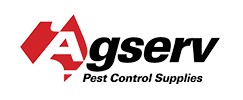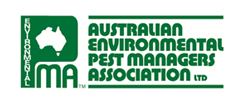Recognition of Prior Learning
Recognition of Prior Learning – RPL
Having your current industry or professional knowledge and skills recognised is one way, and an important process in gaining formal qualifications or proving competency. The RPL process relies on evidence being provided being provided that shows a person meets a person meets all of the knowledge and skill requirements of the units of competence they are seeking.
The following information provides some critical detail relating to any RPL process and needs to be understood by a potential applicant before attempting an RPL.
What you need to prove?
Qualifications (Certificates, Diplomas etc.) are made up of units of competence. Each unit of competence is made up of a number of Elements that define essential outcomes. Each Element has a series of Performance Criteria and these define what needs to be done or demonstrated in order to achieve the Element.
To give an example, one of the units required to gain a Pest Management licence is CPPUPM3005 Manage pests without applying pesticides. This unit of competence has five Elements and there are 24 Performance Criteria divided among these five Elements. Performance Criteria usually contain both knowledge and skill or practical components.
In order to gain an RPL for this particular CPPUPM3005 (Unit 5) you will need to prove that you are able to meet the requirements for all 24 of the Performance Criteria.
What is considered as proof?
The first set of criteria for any proof presented for an RPL is that the evidence provided must be:
- Valid
- Sufficient
- Authentic
- Current.
The evidence provided must meet these requirements in order to be used in the RPL process. All must be met but you need to be aware that Currency generally means the evidence provided must not be more than two years old (five years may be acceptable in some circumstances).
Evidence
The evidence itself can be divided into two types:
- Direct evidence
- Indirect evidence.
Direct evidence:
Direct evidence does not rely on any interpretation. They are statements of fact.
Indirect evidence:
Indirect evidence is a written account, an interpretation, commentary or evaluation that often relates to some direct evidence. It is often difficult to verify indirect evidence.
This table provides examples of the different types of evidence that may be used in an RPL application:
| Direct evidence | |
| Certificates, qualifications | Photographs or video |
| Statements of attainment | Work samples, records, forms |
| Licences | Verified references |
| Professional/Trade membership | Workplace documents |
| Industry awards | |
| Direct evidence obtained by an assessor | |
| Interview | Skills demonstration |
| Work observation | Knowledge assessment |
| Indirect evidence | |
| Resume | Completed job cards |
| Job description | Minutes of meetings |
| Training records | Industry Standards used |
| Performance review | Client references or testimonials |
| Company policies and procedures | Correspondence, emails etc. |
It is important to remember the four elements required of any evidence when considering the evidence you have and you wish to present:
- Valid
- Sufficient
- Authentic
- Current.
If you wish to review the Performance Criteria for the units of competence being undertaken in this program, before you commit to either an RPL or Training pathway, the link below will take you to the training.gov.au website where you can locate the individual units and read through specific performance criteria.
The units covered in this program are as follows and will be found on the website provided:
Pest licence units:
- CPPUPM3005 Manage pests without applying pesticides
- CPPUPM3006 Manage pest by applying pesticides
- CPPUPM3018 Maintain equipment and pesticide storage area in pest management vehicles
Timber pest units:
- CPPUPM3008 Inspect for and report on timber pests
- CPPUPM3010 Control timber pests



